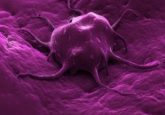Challenging circulating tumor cell study points to new metastasis strategies
New research suggests that circulating tumor cell clusters can pass through capillary-sized blood vessels, challenging previous assumptions and providing potential new strategies to reduce metastasis.
Contradicting widely held beliefs, the researchers, from Massachusetts General Hospital (USA), sought to explain why large clusters have been found in veins far from primary tumors. The enhanced ability of clusters of circulating tumor cells (CTCs) over single cells to drive metastasis is widely accepted and supported by research, yet their behavior in the circulation remained unexplored.
The team developed a microfluidic device with channels tapering to 5–10 µm, mimicking capillaries, finding that over 90% of clusters of up to 20 cells were able to pass through, even in whole blood. Both mesenchymal and epithelial cell phenotypes were analyzed. Imaging demonstrated that the clusters reversibly unfolded on encountering a constriction, reassembling on the other side.
In addition, the size of the largest cell, as opposed to size of the overall cluster, dictated the speed with which they were able to pass through. Investigations using computational methods and in embryonic zebrafish supported these results. Preliminary investigations suggested that CTC cluster reassembly could be disrupted using drugs such as paclitaxel that affect cellular interactions.
“Since how clusters behave at constrictions depends on how strongly the cells adhere to each other, if we can change that strength – either by breaking clusters up into individual cells or preventing them from unfolding, we might be able to control their ability to pass through narrow vessels,” commented Sam Au, lead author of the report. “We’ve challenged the current viewpoint that distant organ metastases are ‘seeded’ only by individual CTCs…This information may change the standard narrative of how metastasis initiates and allow us to devise better ways to combat it.”
The researchers hope this research may lead to development of methods of impeding passage, thus reducing metastatic potential. They note the next steps are to investigate which adhesion molecules are most important, how clusters are reformed – whether it is by repairing broken adhesions or creating new ones – and whether forces exerted on cells as they pass through constrictions affect their metastatic potential.
Sources: Au SH, Storey BD, Moore JC et al. Clusters of circulating tumor cells traverse capillary-sized vessels. PNAS. 113(18), 4947–4952 (2016); Massachusetts General Hospital press release





